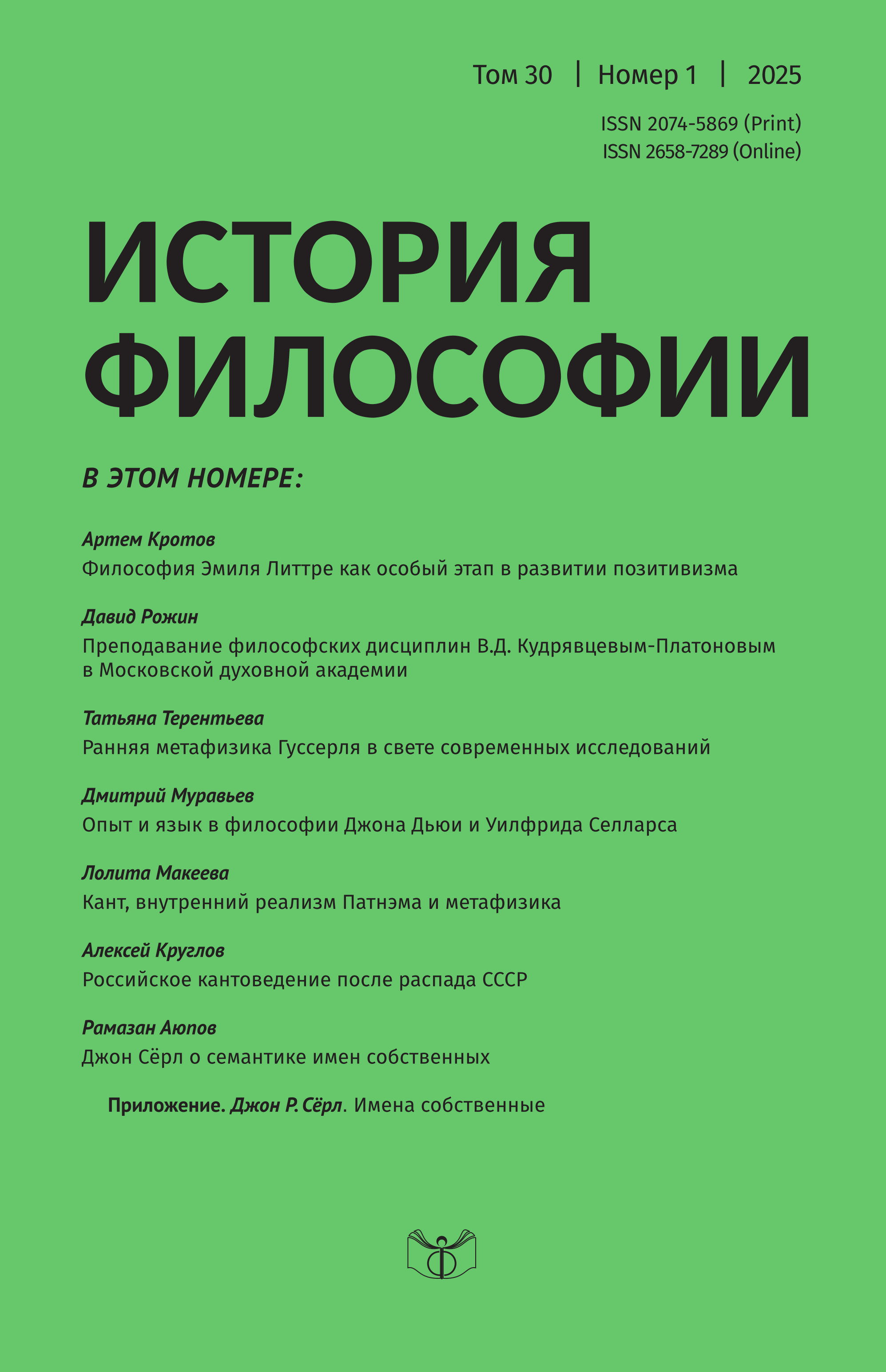Kant, Putnam’s Internal Realism and Metaphysics
DOI:
https://doi.org/10.21146/2074-5869-2025-30-1-76-84Keywords:
Immanuel Kant, metaphysics, analytic philosophy, internal realism, Hilary Putnam, conceptual schemeAbstract
In the second half of the 20th century went through the revival of interest to Kantian ideas, mainly due to Peter Strawson’s efforts. However, many researchers saw in the interest an evident epistemological bias which manifested itself in the stressed attention to the so-called “transcendental arguments”. As is shown in the paper, this charge is not well-grounded since there are many instances which testify to the effect that Kantian approach to metaphysics is relevant for analytic philosophers. One of such instances is the conception of internal realism of Hilary Putnam’s for whom Kant’s most important achievement is the thought that metaphysics is possible if it is constructed not in the way that traditional philosophers used to construct it, but if we proceed from human cognitive possibilities and limitations of the epistemic situation in which humans are put. As a result, Kant’s philosophy became an important source of ideas for the rehabilitation of metaphysics in analytic tradition and for the creation of a new – analytic – type of metaphysics.

